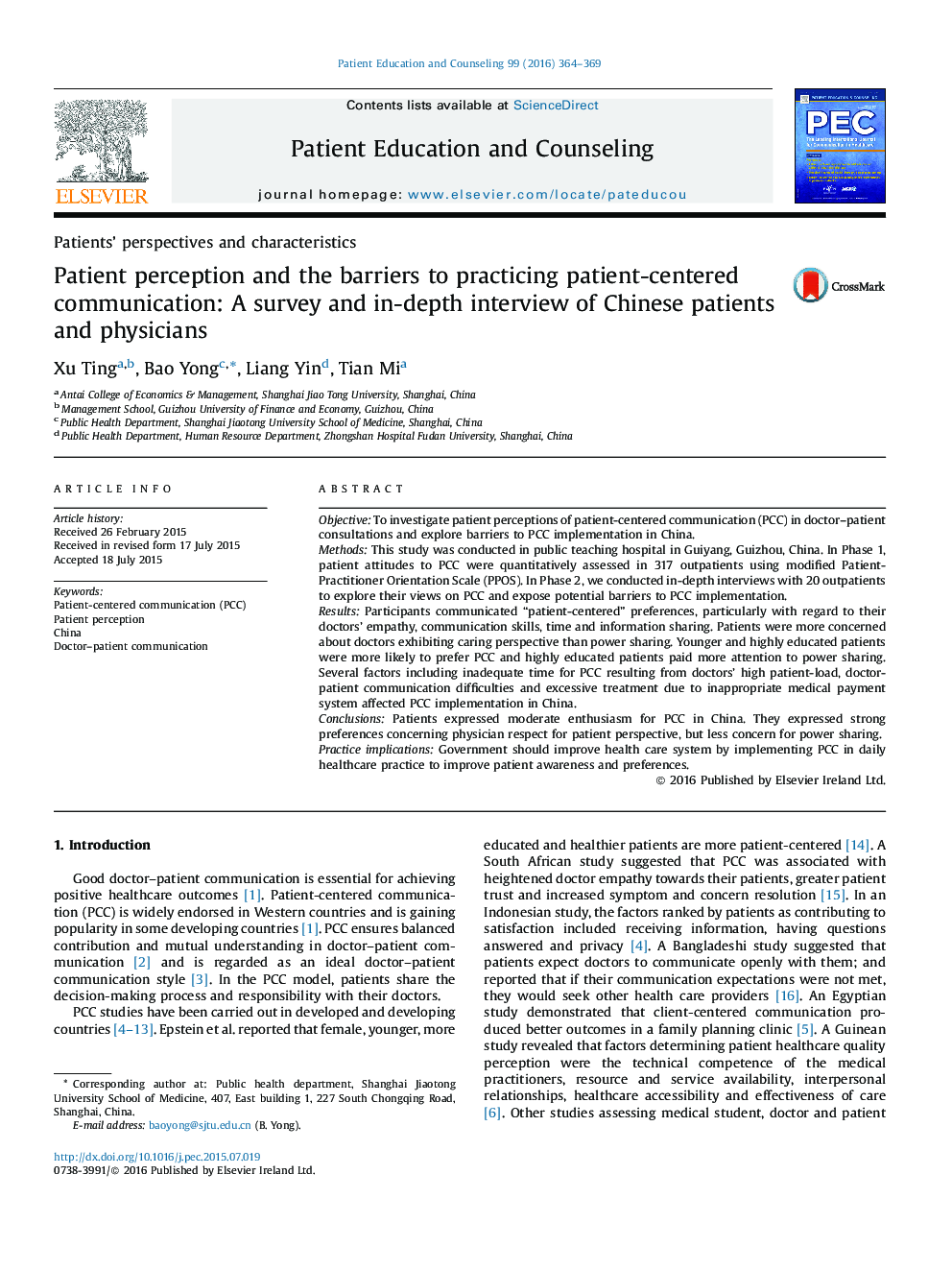| Article ID | Journal | Published Year | Pages | File Type |
|---|---|---|---|---|
| 3814635 | Patient Education and Counseling | 2016 | 6 Pages |
•This was the first report to use the PPOS to measure PCC in China.•The barriers to PCC implementation in China were explored using grounded theory.•Most patients did not want to have fully patient-centered doctor–patient partnership.•Most patients placed less emphasis on power sharing with doctors in decision-making.
ObjectiveTo investigate patient perceptions of patient-centered communication (PCC) in doctor–patient consultations and explore barriers to PCC implementation in China.MethodsThis study was conducted in public teaching hospital in Guiyang, Guizhou, China. In Phase 1, patient attitudes to PCC were quantitatively assessed in 317 outpatients using modified Patient-Practitioner Orientation Scale (PPOS). In Phase 2, we conducted in-depth interviews with 20 outpatients to explore their views on PCC and expose potential barriers to PCC implementation.ResultsParticipants communicated “patient-centered” preferences, particularly with regard to their doctors’ empathy, communication skills, time and information sharing. Patients were more concerned about doctors exhibiting caring perspective than power sharing. Younger and highly educated patients were more likely to prefer PCC and highly educated patients paid more attention to power sharing. Several factors including inadequate time for PCC resulting from doctors’ high patient-load, doctor-patient communication difficulties and excessive treatment due to inappropriate medical payment system affected PCC implementation in China.ConclusionsPatients expressed moderate enthusiasm for PCC in China. They expressed strong preferences concerning physician respect for patient perspective, but less concern for power sharing.Practice implicationsGovernment should improve health care system by implementing PCC in daily healthcare practice to improve patient awareness and preferences.
